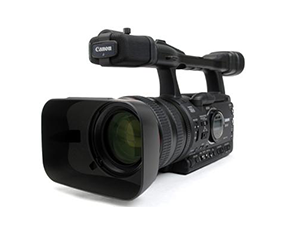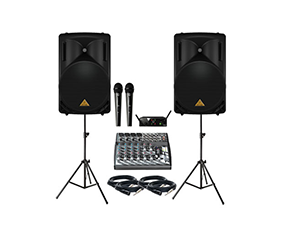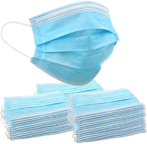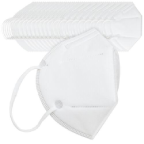| Return to Article Index |
This article was written by the New York Institute of Photography, America’s oldest and largest photography school. NYI provides professional-level training via home study for photographers who want to give their images a professional look, and perhaps earn extra income with their camera.
Travel Photography
Let the trip begin! Landmarks, wonders of the world, exotic people from faraway lands, and your own travel companions. They're all easy to photograph if you just follow NYI's Three Guidelines.
Like all good photographs you take anywhere, you should start by considering the three NYI Guidelines when you lift the viewfinder to your eye. You can study these Guidelines at length by visiting the Picture of the Month Review feature on this Website. Every month we apply the Three Guidelines to a different picture to provide you with a "thought process" that will help you take better pictures any time, anywhere. If you're not clear on the Three Guidelines, we suggest you go to the Picture of the Month Review analysis first, then return here.
In any event, here are the Three Guidelines - which are really the Three Questions you should ask yourself as you peer through the viewfinder before you snap the shutter:
1. What's the subject of my photograph?
2. How can I emphasize my subject?
3. How can I simplify this image so nothing distracts from the subject?1. What's the subject of my photograph?
2. How can I emphasize my subject?
3. How can I simplify this image so nothing distracts from the subject?
©Nick Konovaloff - NYI Student
 Here's a travel shot that meets all Three Guidelines. The subject is big and unambiguous. It's emphasized by being just about the only thing that fills the frame. And it's simplified with nothing distracting that we can see in the background.
Here's a travel shot that meets all Three Guidelines. The subject is big and unambiguous. It's emphasized by being just about the only thing that fills the frame. And it's simplified with nothing distracting that we can see in the background.
All you need to do is ask yourself these three questions every time you're about to take a photograph. Sounds easy, right? It "ain't!" Following the Three Guidelines is particularly difficult when you're taking travel photographs for three reasons -- you, you, and you!
Let's explain what we mean:
First, you're probably seeing something for the first time. It's exciting. So you want to take a picture at the first glimpse. Here in New York, for example, whenever we visit the Statue of Liberty we're amazed to watch tourists who start taking pictures of lady while they're waiting for the ferry in Manhattan - seven miles away!


The statue is tiny from that distance unless you use a monster telephoto lens, which most tourists don't have. In any case, you're going to get up close to the statue...so wait. Your subject is the Statue of Liberty (Guideline 1), that you know. How can you emphasize it (Guideline 2)? You certainly aren't emphasizing it if you get it as a tiny speck seven miles away. Wait. Don't waste film on it until you get closer.
©Chuck DeLaney - NYI Dean

Second, you're probably excited when you're on vacation. You can almost smell the romance and history in the streets of Rome, Florence, or Paris...or Disneyland, the Grand Canyon, or Yosemite. Everything seems so terribly rich and exciting that you could take a great picture by just pointing your camera in any direction, right? Wrong. You feel the excitement in the air, but your pictures don't capture that excitement unless you plan to put it in them.No long ago, on a trip to London we saw a family of tourists emerge from their hotel on the banks of the Thames River. Dad had his wife and kids pose with the Tower Bridge, one of London's greatest landmarks, behind them. But, they were standing in the middle of the hotel's parking lot, with three rows of parked cars directly behind them. Result? A picture of the family in the middle of a parking lot filled with cars, and the bridge as a tiny afterthought in the background.
If Dad had followed the Guidelines he would decide that the subject he wants is his family in front of Tower Bridge (Guideline 1). He could have set up an eye-catching photo in just a few seconds by moving his family just 30 feet out of the parking lot, where (Guideline 2) the picture would show them large up front, with the sweep of the Tower Bridge looming over them. And clearly (Guideline 3) he would have eliminated the distracting parking lot and its rows of automobiles.
 This is the icon that says "London." Make sure it's big in your photograph.
This is the icon that says "London." Make sure it's big in your photograph.
Third, you've dreamed about it for a lifetime, and now you're finally there! Unfortunately, you often find that you're "there" on an off day. The weather is bad. The lighting is bad. It's surrounded by tour buses. Or (as in the picture of Notre Dame, below) it's covered in scaffolding. What to do? Our advice, don't give up quite yet.
Of course, we dreamed of getting a picture like the one we saw in National Geographic. Just realize this: The pro who shot that picture took his (or her) sweet time. He wasn't on a guided tour, being rushed from one sight to another. He scheduled his assignment for the right season. He waited for the right weather. And he took his shots at the right time of day.
You probably don't have that luxury. You've got to see the sights, take your pictures, and move on. Lack of time is often your biggest impediment to great photography. Well, our advice is - scrounge a few extra minutes when you really want to take a great picture of something. Chances are, you spent months planning the trip, and days getting there. A few extra minutes is worth the effort, even if it requires cajoling the spouse, kids, companions, or bus driver. You'll be amazed at what an improvement you can make if you have a couple of minutes. Here's an example:
On a recent spring day we were walking the streets of Washington, D.C., with our camera at the ready. Unexpectedly, we came upon the Capitol Building as we rounded a corner. There it was...so we shot it - just like any harried tourist. Here's the picture we got.

At first glance, it looks "OK," but look, the street and sidewalk are in the way. Our subject is the Capitol. Look at all those cars! We realized that we could eliminate the cars, the street, and the sidewalk if we just walked across the street into the Mall, so we did, and here's what we got:

At least the street is out of the way, but still, the Capitol is really small and distant, and there are lots of distracting things in the foreground. So we got a little closer and took this picture.

This is looking better, but still, look at that distracting lamppost in the foreground and the trees that obscure the Capitol. Then we saw the reflecting pool up ahead and walked closer to it so we had a clear view over the pool and got this shot, eliminating the lamppost and getting the trees out of the way:

A lot better. But look at all that clutter in the foreground. So we walked closer to the pool to cut out the clutter, and we got this.

This one we like. It shows the Capitol as the unambiguous subject of the picture. We've emphasized it by making it big and reflecting it in the pool. And we've eliminated distractions like cars, streets, sidewalks, and lampposts.
Look how much better this picture is than the first one we shot from the corner. And all it took was two or three minutes extra time!


One other advantage of taking your time is this: What's wrong with this picture?

Sometimes when you're in a rush, you might not take that extra second to line up the horizontals in your viewfinder. Admittedly, this is an extreme example we shot to make our point, but you'd be surprised how many photos we see where the all important horizontal lines are a bit off. Don't let this happen to you!
It isn't just off-kilter horizontal lines that detract from your photos. It's also important to try to keep your vertical lines straight as well. We say "try" because it isn't always possible. Here's a tip: When you shoot buildings from up close, they often look like they're tilted or falling over backwards. Like this one of historic Federal Hall in Lower Manhattan. See how the columns appear to lean toward each other? That's because you're too close and the camera is pointed UP at the building.

How should you handle this? Don't point the camera up. Keep the front of the lens parallel to the front of the building. That will straighten out those columns, like this.


Keep this tip in mind when you're trying to photograph a tall structure like the Empire State Building or the Eiffel Tower. It's the secret to getting them to stand up straight! To get them standing straight up, you may have to phptograph them from far away like this.
When you travel, always concentrate on Guideline 1. Know what you want to be the subject of your picture. Then walk around till you see the best view. And, if possible, try to fill the frame with your subject.
©Chuck DeLaney - NYI Dean
 ©Chuck DeLaney - NYI Dean
©Chuck DeLaney - NYI Dean

When we took this photo at the Acropolis of the Parthenon some time ago, there was no restoration work underway on the facade. Now there is work underway, and it may be years before you can take this same photograph without distracting metal support work such as we see here.
©Chuck DeLaney - NYI Dean

Not only is the restoration work visible, but if you compare this shot with the prior view of the Parthenon, you'll see what a difference lighting makes. Same subject, but with the facade in shadow, it's a much less dramatic photo. But, if you're only going to be at the Acropolis for one afternoon in the spring or summer, this is the lighting you're going to find.
©Don Sheff - NYI Director
 A major problem when you travel is people. Hordes of tourists like yourself. They're everywhere - especially, in front of your lens, like here at the pyramids.
A major problem when you travel is people. Hordes of tourists like yourself. They're everywhere - especially, in front of your lens, like here at the pyramids.
While you may not mind showing some tourists in your picture, you are usually better off if you can eliminate them. Oh, you may want to show one or two to give a sense of scale. But how can you get rid of the hordes of tourists who clutter up your picture? Here's a simple trick. Look for a way to hide them from sight behind a wall or some other object in the foreground. They're still there, of course, but you can't see them in your picture!
©Don Sheff - NYI Director
 ©Don Sheff - NYI Director
©Don Sheff - NYI Director

On the other hand, here is a picture where people give a clear sense of the scale of the monument:
©Don Sheff - NYI Director


Sometimes, the lack of people tells the story. Lenin's Tomb used to be the scene of mile-long lines of people waiting to get a glimpse of his remains. Now, most of the time, it's closed and not even a guard stands vigil.
As we said earlier, sometimes the conditions are against you. If it's a hazy day at the Grand Canyon, raining in Times Square, or if the Parthenon is covered in scaffolding for restoration, well, you'll just have to do the best you can.
If the weather is bad, can you come back another day? If not, there's not much you can do except photograph under the existing conditions, and see if you can make the bad weather add "mood" to your picture.
If your problem is restoration work, try to concentrate on photographing details, rather than the entire scaffold-encased structure. Chances are, if you walk around and keep your eyes open, you'll find lots of interesting details that are unobstructed.
What other problems might you encounter? When you're shooting vistas, haze can be a problem. Solution? First, find out if the haze is less visible at a different time of day. Second, try a filter. Haze is usually polarized, so a polarizing filter may help.
©Chuck DeLaney - NYI Dean

These ruins in the French Normandy countryside tower over a scenic river and beautiful farmlands, but it's a hazy day and the background is lost in the haze. A haze or polarizing filter might have helped here.
©Alan Lloyd - NYI Student
 Telephone wires are a frequent problem. Try moving to a position where they are out of frame. Or they are hidden from view. Or they are almost invisible against the busyness of the structure itself.
Telephone wires are a frequent problem. Try moving to a position where they are out of frame. Or they are hidden from view. Or they are almost invisible against the busyness of the structure itself.
Here's a medieval castle in an unusual setting that benefits from a clear day. If you look closely, you may be able to see the telephone wires that run across the entire photo from left to right cutting the white minaret in the center foreground. Here, they're almost invisible, but not quite.
©Robert Duncan - NYI Student
 Probably, the best advice we can offer the traveler is to "keep your eyes open." Look for interesting local color. When you see it, shoot!
Probably, the best advice we can offer the traveler is to "keep your eyes open." Look for interesting local color. When you see it, shoot!
Here's a local color photo that says it all: Japan, Tokyo, crowds, the clash of traditional ways and modern life.
©Don Sheff - NYI Director

Early morning and late afternoon are great times to photograph scenic vistas and landmarks. The world is bathed in warm, orange light. You may also be able to get a little extra time to take photographs while the family's still sleeping in the morning or resting after a busy afternoon.
 Everyone who goes to the top of a tall landmark like the Empire State Building wants to photograph the dramatic view. But pay attention. If it's after dark, turn off your flash. The photo on the left was taken with the flash on, and the humid, hazy air has reflected the light of the flash back to the camera so the shutter has closed before the lights of the city have had a chance to etch themselves on the film. With the flash turned off (photo right) the lights give more definition to the cityscape.
Everyone who goes to the top of a tall landmark like the Empire State Building wants to photograph the dramatic view. But pay attention. If it's after dark, turn off your flash. The photo on the left was taken with the flash on, and the humid, hazy air has reflected the light of the flash back to the camera so the shutter has closed before the lights of the city have had a chance to etch themselves on the film. With the flash turned off (photo right) the lights give more definition to the cityscape.
Tip: Most city lights and buildings that are illuminated at night are best photographed at dusk or at the latest in twilight, rather than in the actual dark of night. These views of Times Square and Osaka were shot at twilight. Again, turn off your camera's flash. 

©Chris Leedham - NYI Student

With a really bright scene, such as the exploding volcano in front of the Mirage Hotel in Las Vegas, there's enough light even in the dead of night. But don't use your flash.
We've covered a lot of tips and ideas, and showed you a lot of pictures that make us "Pea green with envy." We want to go everywhere we haven't yet visited, and return to most of the places we have had the opportunity to tour. But we've only touched the surface of the tips we could pass along on travel photography. If you'd like to learn more about this endlessly interesting aspect of photography, we suggest you consider viewing NYI's Weekend Photo Workshop, a two-videotape set of loads of ideas for great travel, vacation and family photographs.














































